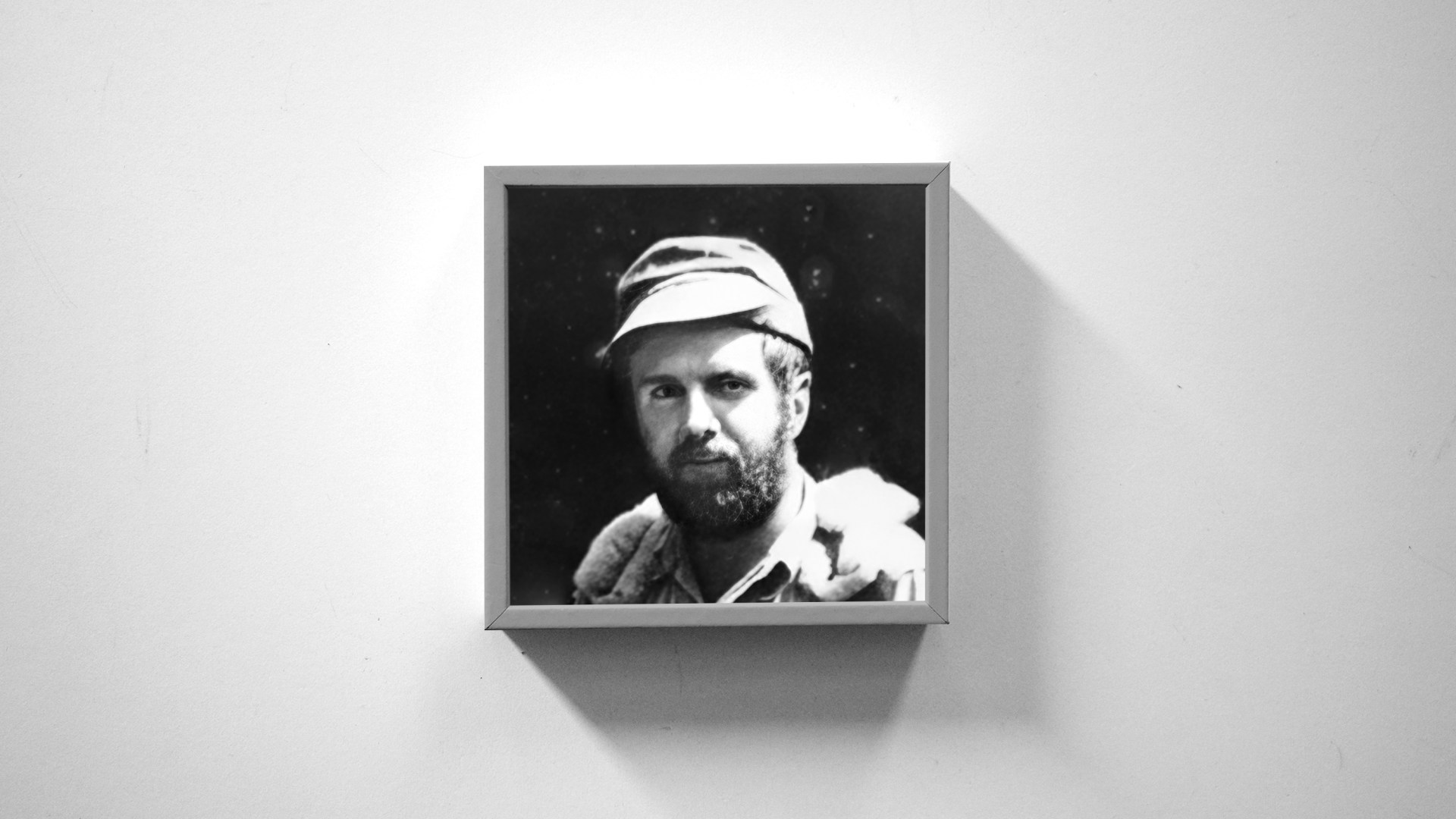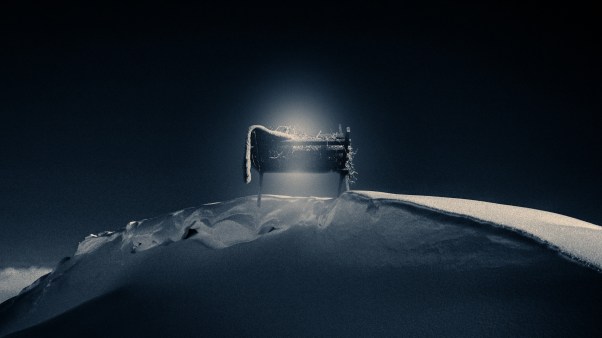Gene Espy wasn’t trying to set a record. He went into the woods in May 1951 to connect with God.
Then he walked for 123 days. One foot in front of the other, the 24-year-old Baptist from Georgia kept going for more than 2,000 miles, north through 14 states, wearing out three pairs of boots and growing a beard so long it scared people. He emerged on a mountaintop in Maine at the end of September, the second person ever to hike the complete length of the Appalachian Trail (AT).
“It was a beautiful day … and the scenery was spectacular in all directions,” he recalled decades later. “I knelt down and said a prayer of thanks to God for watching over me and allowing me to make the hike.”
Espy, who was among the first people inducted into the Appalachian Trail Hall of Fame in 2011, died on August 22 at the age of 98.
Although he was never famous to the general public, Espy became an inspiration to many of the more than 3,000 people who attempt to “thru-hike” the AT every year. Serious hikers and trail devotees see him as a legend. They often sought him out for advice over the years and jumped at opportunities to take a photo with him or just shake his hand.
“Only the second person to do the whole thing at once … ever. No big deal,” one wrote on Instagram. Another called Espy one of the AT’s “founding fathers” and said, “He helped to make the unthinkable thinkable” when he blazed his way through the mountains in 1951. “Thank you, Gene.”
Espy’s hiking gear—including a boot, his socks, and a walking stick he carved as a 12-year-old Boy Scout—are on display at Amicalola Falls State Park, near where the AT begins.
He said he hoped the relics from his trek would “represent the journeys of many—pilgrimages not only into the physical wilderness but into the depths of our souls.”
Eugene Marion Espy was born on April 14, 1927, in Cordele, Georgia, the second of Iona Peterson Espy and Alto Lee Espy’s two sons. His mother was a music teacher. His father was a businessman who ran a cotton-processing plant and warehouse. The family were faithful members of First Baptist Church Cordele.
Espy was also an avid Boy Scout and earned the highest rank, Eagle Scout, in 1943. When he wasn’t pursuing merit badges, he went on his own epic adventures. Espy explored caves throughout the Southeast, rode a motorcycle up Stone Mountain, and sailed 300 miles by himself down the Ocmulgee River, according to his family.
Once he taught himself to water-ski. In a 2010 interview, Espy recalled it wasn’t too hard to figure out, with a little help from Popular Science magazine. The challenge was all the tree stumps just below the surface of the freshly dammed lake. Before he could try to ski, he had to dive to the base of each stump, attach a stick of dynamite, get out of the water, and light a long fuse to blow them up, to create a clear stretch of water.
He first heard of the AT in 1939, when his seventh-grade teacher told his class about the trail that had been completed just two years before. At the time, Espy had never seen mountains, but the idea of trekking through the wilderness captured his imagination.
“I thought, ‘If I ever get the chance, I’d like to hike the whole trail,’” he said.
Espy interrupted his college education to serve in World War II. When he returned from the US Navy, he enrolled in the Georgia Institute of Technology, where he studied industrial management. He graduated in 1950 and got a job in sales. He didn’t like it, though, and decided to go for a walk.
“I had one goal—to see God in nature,” Espy said.
He started from Mount Oglethorpe, Georgia, on May 31. He carried 45 to 50 pounds of stuff on his back: a tent, sleeping bag, inflatable pillow, collapsible cup, rope, hatchet, .25-caliber pistol, poncho, extra shirt, extra pair of socks, notebook, pencil, camera, and New Testament. He kept a map in his hat, where it would stay dry.
Espy shipped replacement boots ahead of himself to post offices along the trail and replenished his food supply—mostly cornmeal mush, raisins, pudding, peanut-butter-and-jelly sandwiches, and chocolate bars—as he went.
He averaged a bit more than 16 miles per day, though sometimes he had to hack his way through overgrown brush, and he frequently wandered off to look at interesting things. The photos he took on the trip show a vast, vibrant wilderness with only few distant signs of human life.
“There would be weeks at a time when I didn’t see anyone on the trail,” Espy said. “I saw a lot of wildlife, though.”
He stopped counting rattlesnakes after he killed 15. One night he slept 50 feet up in a fire tower to stay out of reach of wildcats he could hear in the dark. He also saw birds, bears, deer, and raccoons.
“I never really got lonely,” Espy said. “I read my Bible.”
When he did see people on the trail, the encounters were sometimes strange.
In Damascus, Virginia, a police officer welcomed him to down and insisted he spent the night at “headquarters,” which turned out to mean the jail. Sixty miles later, in Galax, people reported being frightened by his long beard. Another time, a man accused him being a Communist and told to keep moving, or he’d regret it.
Espy learned from a dairy farmer on the way that if he made it to Maine, he would be the second person ever to hike the whole trail. A Pennsylvania man named Earl Shaffer had done it three years before.
“I was surprised that nobody else had hiked the entire trail,” Espy said. “After that, I found a couple of index cards that Earl left in shelters along the way. He wrote notes on them and stuffed them in cracks between logs.”
Espy said he didn’t consider quitting until the very end, when a strong wind blew him over several times in Maine. But he kept going and reached the 100-Mile Wilderness at the end of the AT in September. He spent the final night in the home of a state park ranger before climbing Mount Katahdin, the northern terminus of the trail.
Then he caught a bus home to Georgia. He got married to Eugenia Bass; moved to Macon, Georgia; had two daughters; and went to work as an aeronautic engineer at Robins Air Force Base.
The family joined Highland Hills Baptist Church, a Southern Baptist and then Cooperative Baptist congregation. His family recalls him as a devoted Christian and someone who loved his wife so much he’d wake her up in the middle of the night to tell her.
He happily gave advice to hikers over the years, telling them what they should pack, how to prepare, and what to expect. He continued to hike sections of the trail in later years and talked about “getting out into the woods” while he was in the hospital a few days before he died.
“I got what I intended out of the Appalachian Trail,” he once said. “I got to see God’s work in nature.”
Espy is survived by his wife, Eugenia, and daughters Ellen Holliday and Jane Gilsinger. A memorial service will be held at Highland Hills Baptist Church in Macon, Georgia, on September 6.









